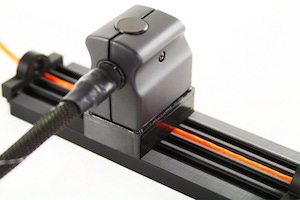Instrument instantly measures surface condition of medical devices
By measuring the water contact angle, the Surface Analyst accurately determines how prepared a material’s surface is for adhesion.
June 4, 2018

 The Surface Analyst, a handheld device for measuring the preparedness of a material’s surface for adhesion, is suited for use in a range of industries, including medical manufacturing and automotive, as well as applications such as flexible packaging. Developed and manufactured by BTG Labs (Cincinnati, OH), it is a fast, easy, accurate and nondestructive instrument for use by manufacturers with critical surface requirements. The company will demonstrate how the Surface Analyst can be used to test the surface of medical devices such as tubing and implantables in booth 762 at the forthcoming Medical Design & Manufacturing (MD&M) East trade show and conference. The event is co-located with PLASTEC East at the Jacob K. Javits Convention Center in New York, NY, on June 12 to 14.
The Surface Analyst, a handheld device for measuring the preparedness of a material’s surface for adhesion, is suited for use in a range of industries, including medical manufacturing and automotive, as well as applications such as flexible packaging. Developed and manufactured by BTG Labs (Cincinnati, OH), it is a fast, easy, accurate and nondestructive instrument for use by manufacturers with critical surface requirements. The company will demonstrate how the Surface Analyst can be used to test the surface of medical devices such as tubing and implantables in booth 762 at the forthcoming Medical Design & Manufacturing (MD&M) East trade show and conference. The event is co-located with PLASTEC East at the Jacob K. Javits Convention Center in New York, NY, on June 12 to 14.
How it works
The Surface Analyst deposits a highly purified drop of water on a surface and then measures the contact angle, which determines the cleanliness level of a substrate.
When a surface is properly prepared, it emits high energy, and the drop of water—a high-energy molecule—spreads out on the surface because it is attracted to other high-energy molecules. A contaminated surface emits low energy and will cause water to bead up in attraction to itself rather than the low-energy surface molecules.
By knowing the volume and area of a drop of water, the Surface Analyst then calculates the contact angle of the water against a given surface. The larger the contact angle, the more the water is beading up on the surface and, therefore, the lower the energy level of the surface, indicating contamination.
Medical industry applications
When used to inspect surfaces in various types of medical devices, the Surface Analyst can:
Validate the presence, absence and uniformity of antimicrobial lubricious coating on medical tubing;
determine the appropriate type of surface treatment for a process;
validate the effectiveness of plasma treatment, ultrasonic cleaning, solvent cleaning and media blasting;
optimize flame and plasma treatment levels on medical devices to prevent over-treatment;
ensure the surface cleanliness of stainless steel, aluminum and titanium;
verify that ultrasonic cleaning is uniform and maximally effective;
audit negative effects on antimicrobial coatings in medical supply storage as a result of extended shelf-life; and
identify the presence of silicone, which can be detrimental to a bond.
Data captured by each inspection are processed by an integrated ARM processor and can be uploaded to the user’s data storage system via a USB port or stored on an included 8-GB thumb drive.
About the Author(s)
You May Also Like


